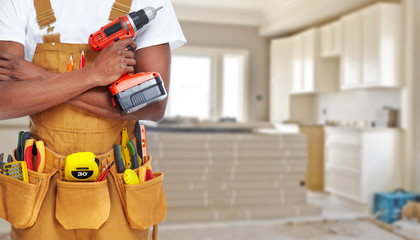Interior painting looks simple, Residential Painters Perth possess a lot of institutional knowledge that you wouldn’t expect. The way they approach a job makes all the difference.
Different surfaces and rooms require different paint types. Often, scrubbable and low or no-VOC paints are chosen because they reduce unhealthy off-gassing.

The right paint job can make a world of difference when it comes to your home or business’s interior. Most walls, trim, and wooden features must be cleaned, sanded, and primed before you can start layering on color. While it might seem unnecessary, it’s crucial to getting the most out of your new coats of paint.
Depending on the scope of your project, preparing a room for painting can take from a few hours to one or more days. This is because it’s important to remove everything you can from the space, cover anything that can’t be removed with tarps or plastic, and prepare any areas that may need extra attention, such as patching holes and cracks, caulking seams and gaps and sanding down uneven surfaces.
Before you can begin cleaning and sanding the surfaces in your interior painting, it’s also vital to protect your furniture and other items from damage. This involves moving larger pieces of furniture away from the wall and covering them with tarps or painter’s plastic. It’s also a good idea to cover floors with drop cloths and masking paper. Remove light switches and outlets from their mountings and put away any decorations or trinkets that you don’t want to get paint splattered on.
It’s also a great idea to set out your painting supplies ahead of time so that when you do start working, you’re ready for whatever is on the agenda. This can help ensure that your project stays on schedule and doesn’t run into any unexpected snags. You might also consider taking this opportunity to stock up on any needed materials, such as primer or additional brushes or rollers.
While painted walls may not collect dirt the way floors or rugs do, they can still develop scuff marks, fingerprints, and other stains. Regular cleaning of your wall surfaces can help keep them looking fresh and extend the life of the paint job.
Many painting contractors include washing a room in their painting costs, but it is also something that homeowners can do themselves. A good cleaning can eliminate loose dust and cobwebs, as well as grease spots and crayon marks. This can help the new coat of paint to adhere better and look smoother.
Washing a painted surface can be done using a mild soap solution or a sponge dipped in water and wrung out until almost dry. Avoid harsh chemicals and degreasers, which can damage the finish and cause adhesion problems. It is important to let the walls dry completely before applying any other products, such as primer or paint.
For best results, flat-painted walls should be washed with warm soapy water. For textured surfaces, it is a good idea to use a mild masonry cleaner or pressure washing for tough stains.
While painting can seem daunting for the average homeowner, it is much simpler than people realize. With the right steps, tools, and techniques, a homeowner can produce professional quality work.
Whether you are planning on transforming your living room, bedroom, or kitchen, painting is an excellent way to create a fresh, updated look. It can be very satisfying to see your hard work come to fruition when the paint is dry, and the room looks clean and inviting. It is important to remember that the prep work is just as crucial as the actual painting. With the proper preparation, the finished project will look great and last for a long time.
Paint primer may seem like an extra step, but it’s necessary to achieve a professional-looking finish. Primer provides a base coat that paint can “lock onto.” It also hides surface stains so your color coat can shine through. A good primer will smooth out walls, especially if patched or repaired, so the eventual color coat looks consistent.
Newly installed drywall requires a primer, as do bare wood surfaces. If you’re painting over a dark color, it’s also a good idea to use a tinted primer to bring the color closer to your wall color. That will reduce the number of colored paint coats you need to apply.
It’s always important to choose the right type of primer for your job. Oil-based primers work well with many different types of paint, including latex, and they provide thicker coverage than some other primers. However, they can take longer to dry and release volatile organic compounds (VOCs) into the air during and after application. Latex primers are less expensive and VOC-free, making them the most popular choice.
Whether repainting your home a new color or switching to a trending hue, a fresh coat of interior paint can completely transform the room. It’s a relatively affordable and easy DIY project that can refresh your space and add color to any home design scheme. With a little prep and a couple of gallons of paint, you can breathe new life into your home. Just be sure to choose a high-quality paint that will withstand the elements and resist fading, mildew, and stains. Luckily, paint has come a long way since we first started slapping it on cave walls—now it’s durable, versatile, and available in an endless array of shades and finishes.
Interior painting is one of the most DIY-friendly and inexpensive home improvement projects. It can transform a room in just a few steps and make your house feel more comfortable and welcoming.
It’s also important to choose the right paint for your project. The type of paint you need depends on the surface, such as wood or concrete. You should also consider your preferences and budget, as there are many different options available on the market today. For example, there are a variety of finishes available, including matte, satin, and gloss. In addition, there are also water-based and oil-based paints. Water-based paints are generally cheaper than oil-based paints, but they may not be as durable.
Most people prefer latex paint for their homes, as it isn’t yellow and is easy to clean. It also has low levels of volatile organic compounds (VOCs), which reduce odors and air pollution. However, there are several other factors that you should keep in mind before choosing the right paint for your home, including:
Whether you choose an oil-based or water-based product, the durability of the paint is determined by its sheen level and type. Matte paints are usually the least durable, while eggshells and semi-gloss are a bit more resistant to damage.
Another important factor to consider is the colorfastness of the paint. It’s important to choose a color that will last, as it must withstand constant exposure to sunlight and UV radiation. You should also pay attention to the color’s consistency, determined by its viscosity. High viscosity means the paint is thicker and will splatter or dripless, but it will take longer to dry.
Painting the interior of a home can add an entirely new look and feel to your living space. A fresh coat of paint can also help protect walls from damage due to scuffing, scratching, humidity, and more, making it an essential part of home maintenance.
There are many different types of paint available, from flat to gloss. Typically, the higher the sheen, the more resin and less pigments and, therefore, the more durable the finish. Matte finishes tend to hide surface imperfections well, while glossy paints will highlight them. Some paints may be oil-based, while others are water-based. Typically, oil-based paints emit more ozone-depleting volatile organic compounds (VOCs) than water-based ones.
Once you’ve chosen your color and finish, it’s time to start preparing your walls for painting. It’s important to sand rough spots and use putty or caulk to patch any holes, cracks, or seams before you begin. It’s also a good idea to use canvas drop cloths in your work area to prevent spills or spatters from damaging your carpet or wood floors.
Professional painters often follow a specific order when painting a room, starting with the trim and moving on to the walls. This allows them to work quickly and avoid having to tape off two adjacent surfaces simultaneously.
It’s also important to choose low-VOC paints for interior rooms, as they are less likely to release harmful chemicals into the air. Some older paints, even water-based, can still cast a significant amount of VOCs into the atmosphere. Choosing low-VOC paints and primers will help minimize this impact. You can find them in various finishes, including flat, eggshell, and semi-gloss, as well as a wide range of faux-finish effects.


